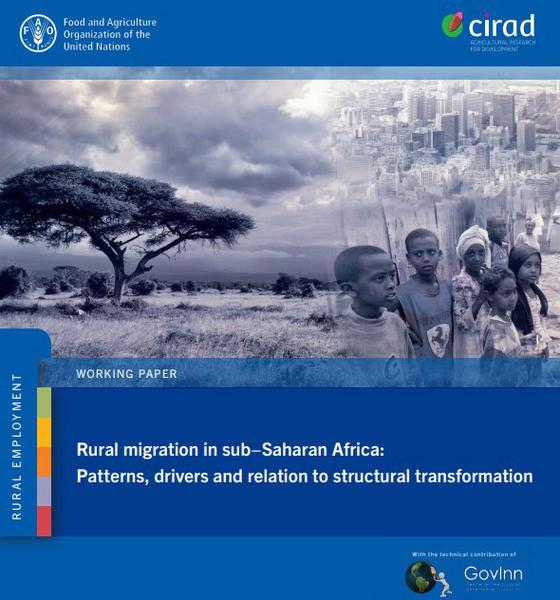Just out 3 November 2025
- Home
- CIRAD news
- News
- Rural migration in sub-Saharan Africa: Patterns, drivers and relation to structural transformation
Rural migration in sub-Saharan Africa: Patterns, drivers and relation to structural transformation

In a change from the past, recent rural migration has been set against the unique backdrop of major rural and urban population growth , which generates critical socioeconomic and environmental challenges. In this context, intertwined migration drivers emerge and call for a better understanding of ongoing dynamics.
Beyond the classical one-way rural-urban migration, contemporary African migration is characterized by widespread multi-directional (including rural-to-rural and urban-to-rural), more complex movements with a degree of circular migration. It results in two-way and continuous relations between rural migrants and their areas of origin. These patterns support socioeconomic linkages within and across space and sectors, which challenge the conventional knowledge on the processes of rural change. They reveal that migration performs a range of socioeconomic functions far beyond the mere transfer of labour from agriculture to other sectors and from rural to urban areas. As such, they highlight possible new structural transformation paths, in response to existing challenges faced by the region in terms of demographic and economic transition.
The paper provides an up-to-date review of the literature on the patterns and drivers of rural migration in sub-Saharan Africa and explores their relation to rural and structural transformation, with the objective of feeding the current policy debate on migration. Based on a mixed approach that combines a critical literature review of past, current and future drivers of migration and analyses of available data, the paper first elaborates a multi-disciplinary and comprehensive conceptual framework for the understanding of the drivers and patterns of rural migration. It then examines the evolving patterns of African rural migration and presents renewed migration characteristics, which have emerged over the last decades.
Lastly, the paper discusses the characteristics and dynamics of the drivers using existing datasets and case studies. It highlights the diverse and multifaceted nature of the drivers of rural migration and the way they act in combination to shape African rural migration dynamics and their links to contemporary regional and sectoral dynamics.
This latest publication, together with the atlas on rural migration in sub-Saharan Africa published in 2017, is the result of a partnership between CIRAD and the Food and Agriculture Organization of the United Nations (FAO). It was prepared by CIRAD in collaboration with the Centre for the Study of Governance Innovation (GovInn), South Africa, with financial support from FAO and CIRAD, and recently released on the FAO website. The working paper was coordinated by Sara Mercandalli and Bruno Losch (CIRAD, UMR Art-Dev, and GovInn, respectively at the University of Pretoria – UP – and the University of the Western Cape – UWC – in South Africa) who directly contributed to all the sections of the document, with the support of colleagues from CIRAD, UWC and UP.



























